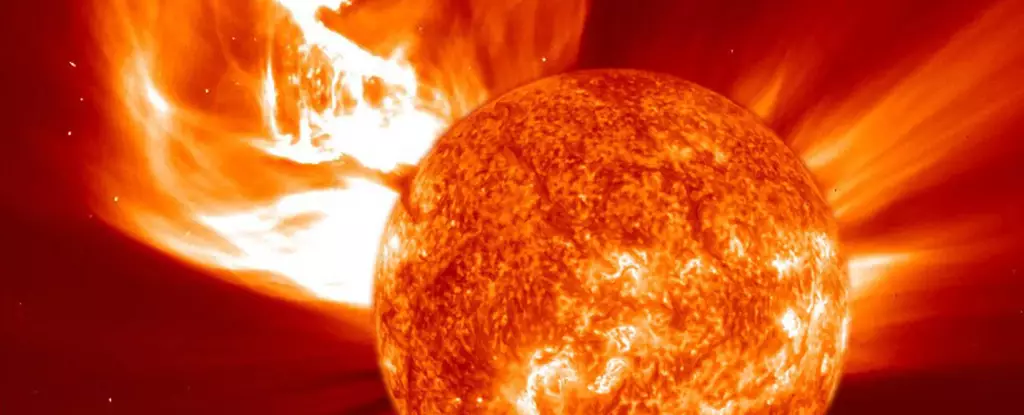Last week marked a significant milestone, albeit a sorrowful one, for Curtin University’s Binar Space Program with the fiery incineration of its three small satellites—Binar-2, Binar-3, and Binar-4—in Earth’s atmosphere. The very essence of the Binar mission is encapsulated in its name, derived from the Noongar language meaning “fireball.” This name bears an ironic twist because, while the phenomenon of burning up during reentry was always an anticipated part of low Earth orbit (LEO) operations, the satellites’ premature demise came as an unexpected setback. Initially designed to last six months in orbit, these CubeSats tragically lasted only two months before succumbing to the harsh realities of space weather exacerbated by heightened solar activity.
As satellites orbit Earth at altitudes of 2,000 kilometers or less, they are subject to orbital decay driven by a multitude of factors, with atmospheric drag leading the charge. However, the stakes are raised during periods of heightened solar activity, which has shown a marked increase in recent months. Striking phenomena such as sunspots, solar flares, and solar wind result from the sun’s fluctuating magnetic fields, creating a tumultuous space environment. Every 11 years, the solar cycle escalates, peaking in intensity and complexity at its midpoint—currently, we find ourselves in solar cycle 25, where unexpected spikes in solar activity continue to pose significant challenges for satellite management and stability.
In these turbulent times, solar activity has surged beyond predicted levels by more than fifty percent, creating an array of effects on multiple satellites across various sectors. The implications of such heightened solar phenomena extend far beyond academic interest; they pose practical difficulties that satellite operators grapple with daily.
Solar winds and heightened solar flares lead to more than just visually stunning auroras—these phenomena infiltrate satellite operations directly. As solar energy infiltrates the Earth’s atmosphere, it adds warmth and expands the outer atmosphere, resulting in increased drag for satellites. This can disrupt their trajectory, causing them to descend toward Earth prematurely. Spacecraft positioned in low Earth orbit, including the International Space Station and commercial satellite constellations like Starlink, can implement thrusters to counteract this additional drag; however, CubeSats like Binar, which lack such sophisticated adjustments, remain vulnerable to these shifts.
With their compact design and limited programmable maneuverability, CubeSats are especially susceptible to atmospheric changes. The Binar CubeSats were initially expected to survive an extended duration due to their expanded surface area from deployable solar arrays, yet the rise in solar energy absorption created conditions that proved too challenging to overcome.
While the demise of Binar-2, Binar-3, and Binar-4 was certainly disappointing, it has also illuminated crucial lessons in the realm of satellite technology and the impact of solar activity on operational viability. The Binar Space Program, notably established in September 2021 with the launch of its first satellite, Binar-1, had originally navigated a relatively calm solar landscape, sustaining itself for an impressive 364 days at an altitude of 420 km.
This latest setback underscores the importance of refining forecasting techniques for solar activity—a narrative that resonates widely, particularly within the commercial satellite sector. As satellite missions often incur significant costs, better predictions of solar events could help operators make informed decisions about flight paths, mission timelines, and additional countermeasures.
Looking ahead, the Binar team is already strategizing for future missions, which are expected to launch during a potentially more stable phase of solar activity. The natural ebb and flow of solar cycles suggests that we may anticipate a return to calmer conditions as we approach a solar minimum forecast by 2030.
Despite the challenges posed by unpredictable solar activity, the insights gained from the Binar Space Program will undoubtedly enhance our understanding of satellite dynamics in LEO. The premature exit of these experimental CubeSats serves not only as a lesson in resilience but also a reminder of the importance of continuous innovation and adaptability in space research and technology.
While the fiery fate of Binar-2, 3, and 4 underscores the intricacies of space weather and satellite operations, it also opens a pathway to understanding the delicate interplay between human endeavors and the natural forces that govern our universe. Moving forward, the lessons learned will help pave the way for future satellite missions that can better withstand the challenges posed by solar phenomena.

